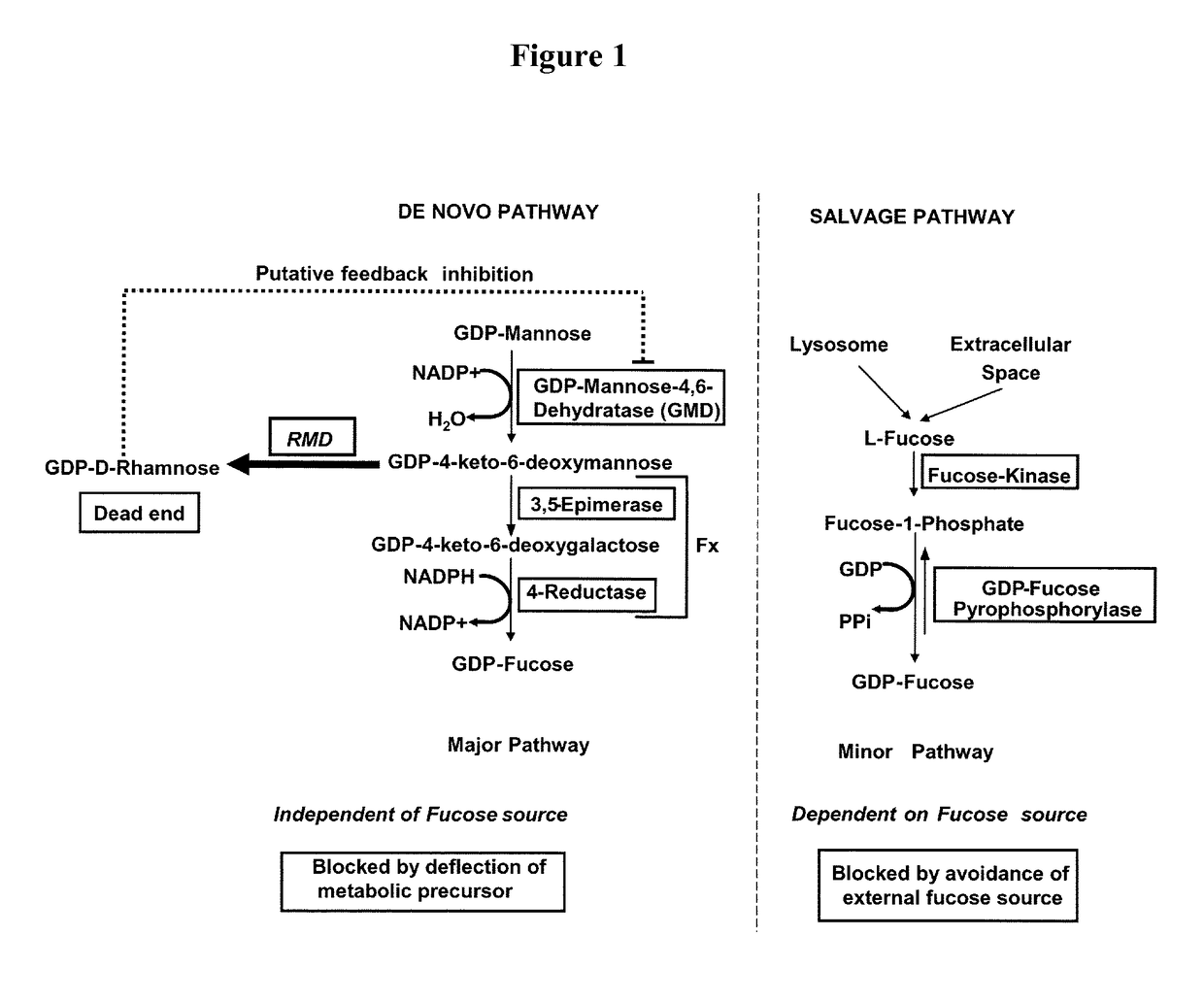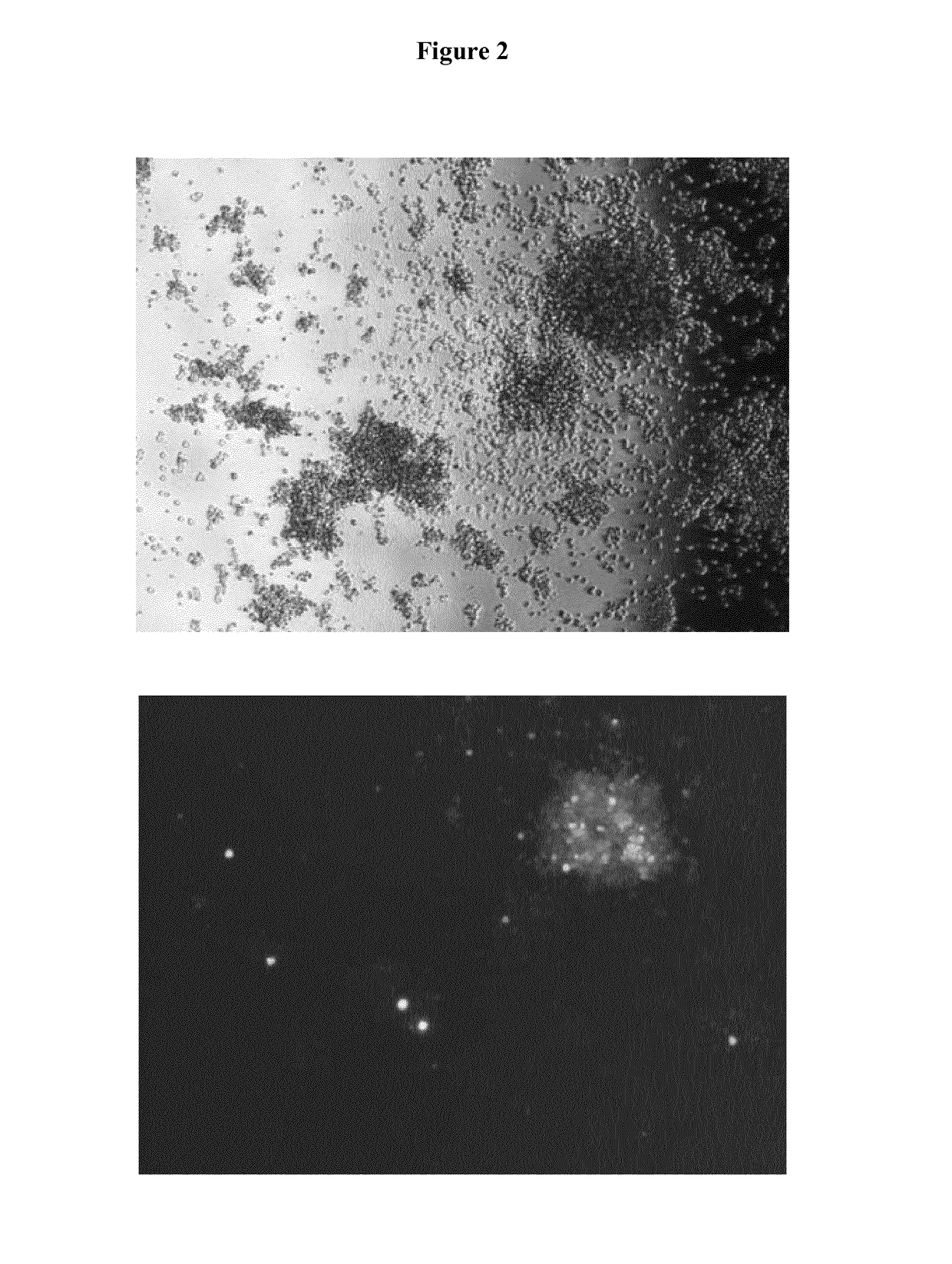Methods for preparation of fucose-linked site specific conjugates of proteins with toxins, adjuvants, detection labels and pharmacokinetic half life extenders
a technology of fucose-linked site and conjugate, which is applied in the field of preparation of fucose-linked site specific conjugates of proteins with toxins, adjuvants, detection labels and pharmacokinetic half life extenders, can solve the problems of difficult to avoid undesirable coupling, difficult to achieve asymmetric conjugation, and risk of lot consistency
- Summary
- Abstract
- Description
- Claims
- Application Information
AI Technical Summary
Benefits of technology
Problems solved by technology
Method used
Image
Examples
examples
Cell Lines
[0308]The recombinant CHO / DG44 cell line CHO-IgG was established earlier in our laboratory by stable transfection of the dihydrofolate reductase-deficient CHO cell line, CHO / DG44 (Urlaub et al., 1986, Proc Natl Acad Sci USA. 83 (2): 337-341) with an expression vector containing an antibody expression cassette comprising nucleotide sequences encoding light and heavy chain of a therapeutic monoclonal antibody (Trastuzumab (Herceptin®)). Generation of the cell line RMD-CHO-IgG started from the existing CHO-IgG cell line. Both cell lines were maintained in serum-free medium.
Gene Optimization and Synthesis
[0309]The amino acid sequence for the oxidoreductase Rmd (Pseudomonas aeruginosa PAO1; 304 amino acids) (GenBank Accession No. GenBank: AAG08839.1) was reverse translated and the resulting nucleotide sequence optimized by knockout of cryptic splice sites and RNA destabilizing sequence elements, optimisation for increased RNA stability and adaptation of codon usage to match the...
PUM
| Property | Measurement | Unit |
|---|---|---|
| pH | aaaaa | aaaaa |
| volume | aaaaa | aaaaa |
| volume | aaaaa | aaaaa |
Abstract
Description
Claims
Application Information
 Login to View More
Login to View More - R&D
- Intellectual Property
- Life Sciences
- Materials
- Tech Scout
- Unparalleled Data Quality
- Higher Quality Content
- 60% Fewer Hallucinations
Browse by: Latest US Patents, China's latest patents, Technical Efficacy Thesaurus, Application Domain, Technology Topic, Popular Technical Reports.
© 2025 PatSnap. All rights reserved.Legal|Privacy policy|Modern Slavery Act Transparency Statement|Sitemap|About US| Contact US: help@patsnap.com



